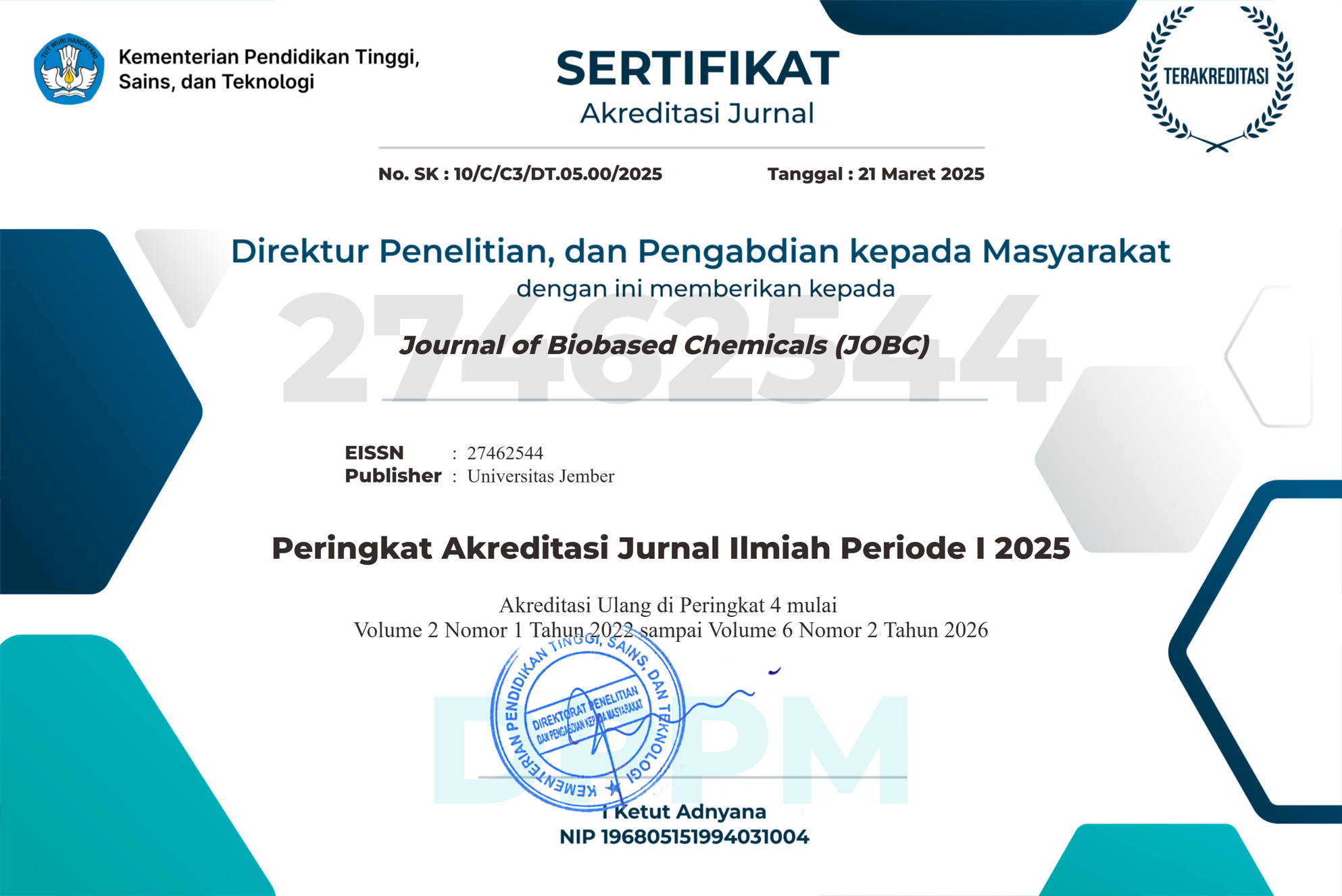Natural Sources Screening for Antimicrobial Agents of Herbs, Spices, and Extract: A Semi-Qualitative Study
DOI:
https://doi.org/10.19184/jobc.v1i1.107Keywords:
herbs, spices, extracts, antimicrobial activity, and agar dilution methodAbstract
Indonesia has been recognized for its rich natural ingredients such as spices, herbs, and extracts for decades. Furthermore, these components also have been used as an herbal medicine for a long time ago. Meanwhile, the apparent capability comparison of several components on antimicrobial activity has not been updated yet. This study was conducting the comparison of antimicrobial activity for several materials such as noni (Morinda citrifolia), garlic (Allium sativum), celery (Apium graveolens), galangal (Alpinia galangal), ginger (Zingiber officinale), yellow turmeric (Curcuma longa), lime (Citrus aurantifolia), papaya (Carica papaya) leaf, betel (Piper betle) leaf, and cutcherry (Kaempferia galangal) using agar dilution method. Two types of bacteria are used for the test, namely gram-negative bacteria and gram-positive bacteria, with a total of seven bacteria. The media used were TSA (Trypticase Soy Agar) media for gram-negative bacteria and MRSA (Methicillin-Resistant Staphylococcus Aureus) media for gram-positive bacteria. This study had been conducted by using a fast screening method, which referred to a semi-qualitative method. Several components, such as noni, lime, and betel leaf, showed a significant result of antimicrobial activity. Otherwise, other compounds, surprisingly, could not suppress bacterial growth.








